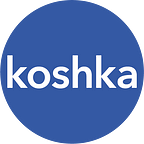Who calculates the price of downtime?
Digitization, Transformation, Industry 4.0, Blockchain, AI, New Work. Many companies have understood that changes are happening faster and faster and that they can no longer rest on their laurels. And yet they are often overwhelmed by the confused jungle of buzzwording The initial cluelessness becomes caution, becomes powerlessness, becomes stagnation. The risks of the new and the unknown are too big. Fresh ideas could fail on the market and endanger the company. From a biological point of view, the unknown causes a state of anxiety. Our brain constantly balances all impressions and realizes change as a threat. The consequence: You rather stick with the tried and tested — you know it, it works, you have always done it that way.
With new ideas you grope into the darkness like in the nightly forest without seeing where the path may still lead. Congratulations, you’ re about to discover new territory! Innovations are not an incalculable risk, but quite the opposite. Setting budgets, deadlines and required resources provide a framework within which ideas can move freely. So you always have the worst case in mind.
But how do you calculate the risk of standstill? What is the risk if the company does not evolve? We call it a negative lotto play. Every day you draw a ticket and hope for a blank. Fingering every day in the hope that no startup will be born that will make your own business superfluous.
Looking back into the past, the probability of this should not be underestimated. Synthetic rubber, light bulb, disposable diaper, digital camera, cars — innovations that have rolled over entire industries. At first nobody sees them coming, then they are fought until it is finally too late. Whether coachmen versus cars, taxi industry versus Uber, human versus AI, radio versus TV versus streaming. Innovations build up like a big wave and cannot be stopped. And yet threatened industries struggle against it like a rock, removed layer by layer until they finally collapse. So wouldn’t it be more lucrative to be the wave itself? Attack yourself before someone else does? Why waste energy on something that can’t be stopped anyway? Innovations will always prevail, because innovation means introducing and being accepted by the market. The customer accepts new ideas because they bring added value that did not previously exist.
A perfect example of cannibalization is Netflix. It has been operating as an online video library since 1997 — renting, watching and returning DVDs. Business was good and Netflix could have sat back. Wait for a threatening competitor to show up. Instead, however, the company’s own core business was repeatedly questioned. Instead of DVDs there were later downloads. As the Internet became faster and faster, streaming came. Would you have been so brave? Or would you have stayed with the known? In the comfort of the old country?
Of course, nobody says that you have to endanger your company and rely completely on All-In. Innovations can also improve your existing product, expand it or create something completely new and make the old superfluous. Innovation does not mean revolution.
Incremental innovations improve existing products and secure your cash flow. New business models are examined and tested with semi-radical innovations. Thus, the carsharing model is only an extension of an existing business model. With DriveNow, BMW is expanding its market and appealing to a new target group. Young people who don’t want to afford their own car because they rarely use it anyway or don’t want to deal with insurances, TÜV, repairs and inspections.
The so-called game changers, which involve changes in their entire market environment, are rarer and much more difficult to produce. However, they do create an immense competitive advantage for a certain period of time. Kodak had such a game changer — the invention of the digital camera by an internal engineer. But Kodak shied away from the risk. An attack on the own core business? Completely unimaginable, the sale of analog films dropped too much profit. The race was won by others.
To remain in the market, companies must keep all three pillars in balance and create meaningful resources for this. Incremental innovations secure income and create the money for larger, more radical solutions in order to position oneself at the top of the competition.
They must begin to adapt to constantly changing needs. It needs disturbance and friction, which are essential for new ideas. Your employees look at each other every day, think and act similarly. It is difficult to really create something new. So create new perspectives on the problem, bring other experiences on board, curiosity and ignorance. Yes, ignorance. Question everything in your company. Take nothing for granted.
Get to grips with the challenge step by step. Observe and try to understand the real customer needs. Henry Ford had already understood then: “If I had asked people, they would have wished for faster horses.” Customers only want what they already know. So how could Ford’s customers wish for a car if they didn’t know it? However, Ford recognized their need to get from A to B safely and as quickly as possible.
Good innovative solutions result from observation, understanding, comprehension, idea development, prototypes, tests and iterations. The right strategy makes innovations calculable and safe. Too many companies throw the child into the forest hoping that it will survive on its own. All the way or not at all. But ideas need room to grow, to change and to develop close to the customer needs.
Innovations are not magic that are reserved only for big players or startups. Everyone can come up with ideas, be creative and guide their company into the future with innovations. So don’t wait, become a designer yourself.
